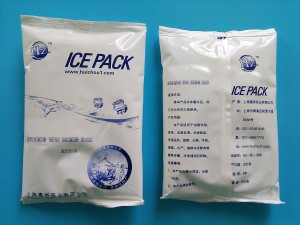
The reusable icepacks market size is expected to grow by USD 8.77 billion from 2021 to 2026. In addition, the growth momentum of the market will accelerate at a CAGR of 8.06% during the forecast period, according to the latest report from Technavio. The market has been segmented by product (ice or dry icepacks, refrigerant gel-based icepacks, and chemical-based icepacks), application (food and beverage, medical and healthcare, and chemicals), and geography (North America, APAC, Europe, South America, and the Middle East and Africa).

Market Segmentation
The ice or dry icepacks segment will be the largest contributor to market growth during the forecast period. Ice or dry icepacks are generally used for shipping medical supplies, meat, seafood, and biological materials. They keep food cold for a longer period, which makes them suitable for shipping meat and other perishables. Reusable dry icepacks sheets can be cut as per the size of the box, are non-toxic and environment-friendly, are and lighter. The demand for ice or dry icepacks is expected to in food and beverage applications owing to these factors. This, in turn, will drive the growth of the global reusable icepacks market during the forecast period.
Solution for the exterior of the cooling chamber
Inter Fresh Concepts is a Dutch company specializing in providing solutions, particularly in the fruit and vegetable sector. Leon Hoogervorst, the director of Inter Fresh Concepts, explains, “Our company’s experience is rooted in the fruit and vegetable industry, giving us insight into this specific sector. We are dedicated to offering clients prompt and practical solutions and advice.”
Ice packs are primarily used to maintain the quality of fruits and vegetables at fluctuating temperatures, such as those experienced during cross-docking or when products are waiting for the next truck at an airport terminal before being loaded onto an airplane.Our thickened ice packs enable us to consistently maintain temperatures throughout the entire trip, cooling our products for over 24 hours, which is twice as long as conventional cooling elements. Additionally, during air transport, we frequently utilize isolating pallet covers to shield the goods from temperature variations.
Online sales
Lately, there has been a growing need for cooling solutions, especially in the retail industry. The surge in online orders from supermarkets due to the impact of the coronavirus has increased the demand for reliable delivery services. These services often rely on small, non-air-conditioned delivery vans to transport goods directly to customers’ doors. This has prompted a greater interest in cooling products that can maintain perishable items at the required temperature for extended periods. Additionally, the reusability of ice packs has become an attractive feature, as it aligns with the goal of providing sustainable and cost-effective cooling solutions. During the recent heatwave, there was a noticeable spike in demand, with many businesses seeking assurance that their cooling elements would meet the strict standards set by the Dutch Food and Consumer Product Safety Authority, both to uphold product quality and comply with regulatory requirements.
Better control over the correct temperature
Cooling elements serve a broader purpose than just facilitating the transfer of goods from the refrigeration area to the truck. Leon recognizes additional potential applications for maintaining the ideal temperature. “These applications are already well-established in the pharmaceutical industry. However, there may be opportunities for similar uses in the fruit and vegetable sector as well.”
“For instance, our product line includes various cooling elements capable of sustaining items at, for instance, 15°C. This is achieved through modifications to the gel within these packs, which only begin to melt at approximately that temperature.”